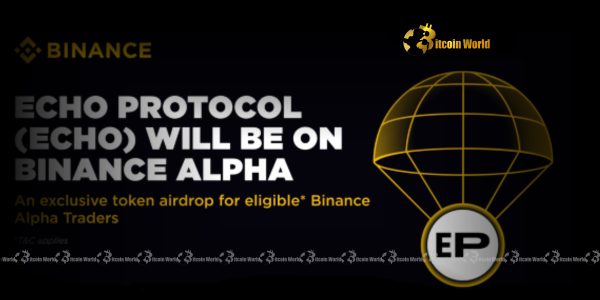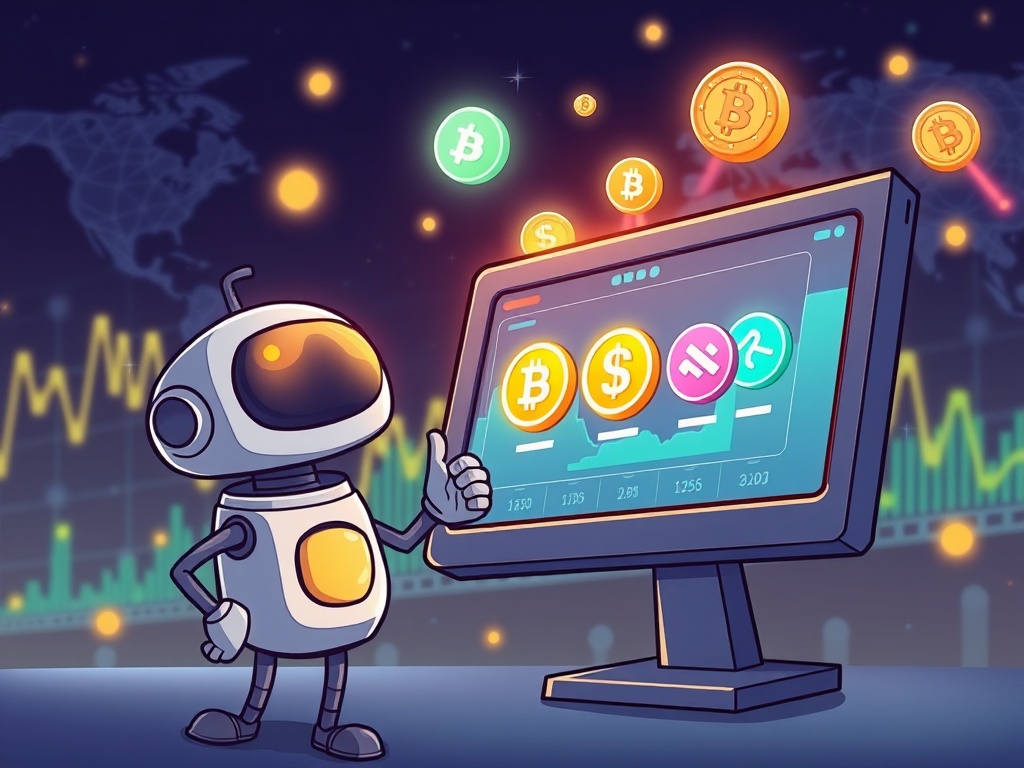BitcoinWorld

Ethereum dApp Activity: Why It’s Thriving and Set to Surpass 2024 Levels
The world of decentralized applications, or dApps, is buzzing with innovation, and at its core, Ethereum continues to stand as a titan. Despite an increasingly competitive blockchain landscape, a significant shift is underway: projections indicate that Ethereum dApp activity is poised to not just match but remarkably surpass its 2024 levels. This isn’t just a hopeful whisper; it’s a data-backed expectation that underscores Ethereum’s enduring relevance and magnetic appeal in the Web3 space. For anyone invested in the future of digital finance, art, gaming, or simply the decentralized web, understanding this trajectory is paramount. Let’s dive deep into what’s driving this anticipated surge and why Ethereum remains a central pillar of the decentralized future.
Understanding the Surge in Ethereum dApp Activity
When we talk about Ethereum dApp activity, we’re referring to the collective engagement with decentralized applications built on the Ethereum blockchain. This includes everything from interacting with DeFi protocols, trading NFTs, playing blockchain games, or participating in decentralized autonomous organizations (DAOs). Metrics like daily active users, transaction volume, total value locked (TVL) in DeFi protocols, and NFT sales volume all contribute to painting a comprehensive picture of this activity.
Ethereum, as the pioneering smart contract platform, has historically been the go-to blockchain for developers looking to build complex, decentralized applications. Its robust security, extensive developer tooling, and vibrant community have fostered an ecosystem that, despite its challenges, continues to attract innovation and user engagement. The steady engagement observed throughout 2024 wasn’t accidental; it was a testament to the platform’s foundational strength and its ability to adapt and evolve.
What’s Fueling This Remarkable Ethereum dApp Growth?
The projected surge in Ethereum dApp activity isn’t based on mere speculation. It’s driven by several tangible factors that have seen renewed interest and significant development over the past year. According to DappRadar analyst Sara Gherghelas, three key sectors have been instrumental in this momentum:
Renewed Interest in Non-Fungible Tokens (NFTs)
- Beyond Collectibles: While early NFT hype was largely centered around digital art and collectibles, the market has matured. We’re now seeing NFTs being integrated into gaming (GameFi), digital identity, ticketing, and even real-world asset tokenization. This expansion of utility has broadened the appeal and potential for sustained engagement.
- Ethereum’s Dominance: Ethereum remains the primary network for high-value NFT collections and marketplaces. Its established infrastructure and liquidity continue to make it the preferred choice for creators and collectors alike, driving significant transaction volumes and user interactions.
The Proliferation of Layer-2 Ecosystems
One of Ethereum’s long-standing challenges has been scalability and high transaction fees (gas fees), especially during periods of peak network congestion. This is where Layer-2 (L2) solutions have stepped in, offering a powerful remedy. L2s are separate blockchains that extend Ethereum’s capabilities by handling transactions off the mainnet (Layer-1) and then batching them back to Ethereum for final settlement, significantly reducing costs and increasing transaction throughput.
The rapid adoption and development of L2s like Arbitrum, Optimism, Polygon, and zkSync have been game-changers for Ethereum dApp activity. These networks provide a much more user-friendly and cost-effective environment for everyday dApp interactions, from swapping tokens to playing games, all while inheriting the robust security of the Ethereum mainnet. This has opened the floodgates for new users and more frequent interactions that might have been cost-prohibitive on Layer-1.
The Evolution and Resilience of Decentralized Finance (DeFi)
DeFi, the ecosystem of financial applications built on blockchain, found its genesis and continues to thrive predominantly on Ethereum. From decentralized exchanges (DEXs) like Uniswap to lending protocols like Aave and Compound, Ethereum hosts the vast majority of DeFi’s total value locked (TVL) and user base. The sector has demonstrated remarkable resilience and innovation, moving beyond simple lending and borrowing to include:
- Yield Farming and Staking: New strategies for earning passive income.
- Liquid Staking Derivatives (LSDs): Allowing users to stake ETH and still use their staked assets in DeFi.
- Real-World Assets (RWAs): Tokenizing tangible assets like real estate or bonds, bridging traditional finance with DeFi.
This continuous innovation ensures that DeFi remains a powerful magnet for capital and users, cementing Ethereum’s central role in high-value Web3 sectors.
Navigating the Competitive Web3 Landscape: Is Ethereum dApp Dominance Secure?
It’s undeniable that Ethereum faces fierce competition. Blockchains like Solana, Avalanche, BNB Chain, and Polkadot have emerged, each vying for a share of the dApp market with promises of higher throughput and lower fees. While these networks have carved out their niches and attracted significant projects, Ethereum’s position as the leading smart contract platform for dApps remains largely unchallenged in terms of overall value and developer mindshare.
Why does Ethereum continue to hold its ground? Several factors contribute to its enduring dominance:
- Unparalleled Security: Post-Merge, Ethereum’s Proof-of-Stake consensus mechanism provides an extremely high level of security, making it the most trusted network for high-value transactions and critical applications.
- Deepest Liquidity: Ethereum boasts the largest and most liquid ecosystem for digital assets, making it easier for users to trade and for protocols to function efficiently.
- Robust Developer Community: Ethereum has the largest and most active developer community in the blockchain space. This translates to continuous innovation, better tooling, and a constant influx of new dApps and improvements.
- Network Effects: The sheer number of users, developers, and applications built on Ethereum creates powerful network effects, making it increasingly valuable for new participants to join.
Here’s a simplified comparison of key aspects often considered when evaluating dApp platforms:
| Feature | Ethereum (Mainnet + L2s) | Competitor Chains (e.g., Solana, BNB Chain) |
|---|---|---|
| Security & Decentralization | Highest, battle-tested, extensive node network | Good, but often more centralized than Ethereum |
| Scalability | Significantly improved with L2s; ongoing L1 upgrades | High native throughput, but can face outages |
| Transaction Fees | Variable on L1; very low on L2s | Generally low, but can spike |
| Developer Ecosystem | Largest, most mature, rich tooling | Growing, but smaller and less mature |
| Total Value Locked (TVL) | Dominant share, especially in DeFi | Significant, but trailing Ethereum |
Ethereum dApp Activity Beyond 2024: Projections for 2025
The momentum observed in 2024 is not expected to wane; in fact, it’s projected to accelerate. Sara Gherghelas’s insight from DappRadar highlights that Ethereum continues to play a central role in high-value Web3 sectors, and this momentum is likely to carry through 2025. This optimism stems from several factors:
- Continued L2 Adoption: As L2s become even more efficient and user-friendly, a greater volume of everyday transactions and user interactions will migrate to these layers, boosting overall Ethereum dApp activity.
- Upcoming Protocol Upgrades: While The Merge focused on consensus, future upgrades (like those focused on data availability and sharding) are aimed at further enhancing scalability and reducing costs, making Ethereum even more attractive for dApp development and usage.
- Institutional Interest: Growing institutional adoption of cryptocurrencies and blockchain technology is likely to spill over into the dApp space, particularly in areas like tokenized assets and enterprise blockchain solutions built on or connected to Ethereum.
- Innovation Cycle: The Web3 space is characterized by rapid innovation. New use cases for dApps, especially in areas like decentralized social media, digital identity, and real-world asset tokenization, are constantly emerging, ensuring a fresh wave of user engagement.
Challenges and Opportunities for Future Ethereum dApp Development
While the outlook for Ethereum dApp activity is overwhelmingly positive, it’s crucial to acknowledge the challenges that remain and the opportunities they present for further growth and innovation.
Challenges:
- Scalability for Mass Adoption: Despite L2s, true mass adoption for billions of users still requires significant advancements. The goal is to make interacting with dApps as seamless and inexpensive as using traditional web applications.
- User Experience (UX) Complexity: For many new users, interacting with dApps can still be daunting. Wallet management, gas fees, and understanding smart contract interactions present barriers to entry. Simplifying UX through account abstraction and intuitive interfaces is critical.
- Regulatory Uncertainty: The evolving global regulatory landscape poses challenges for dApp developers and users. Clearer regulations could foster greater confidence and adoption, but uncertainty can stifle innovation.
- Interoperability: While Ethereum is dominant, the blockchain ecosystem is multi-chain. Ensuring seamless interoperability between Ethereum and other networks, as well as traditional systems, is an ongoing challenge.
Opportunities:
- Account Abstraction: This technology aims to make crypto wallets more user-friendly, enabling features like gas payment in any token, social recovery, and multi-factor authentication, which could onboard millions of new users to dApps.
- Zero-Knowledge (ZK) Rollups: These advanced L2 solutions offer even greater privacy and scalability, promising a new generation of high-performance dApps.
- Enterprise Adoption: As businesses explore blockchain for supply chain management, digital identity, and tokenized assets, Ethereum’s robust infrastructure makes it a prime candidate for enterprise-grade dApps.
- Emerging Web3 Paradigms: Decentralized social media, reputation systems, and decentralized science (DeSci) are nascent fields that could see explosive growth on Ethereum, further diversifying dApp activity.
Actionable Insights for Engaging with Ethereum dApps:
- For Users: Explore dApps on various Layer-2 networks to experience lower fees and faster transactions. Research projects thoroughly before engaging. Utilize user-friendly wallets that support multiple networks.
- For Developers: Focus on building on Layer-2s to leverage scalability. Prioritize user experience by exploring account abstraction. Engage with the vibrant Ethereum developer community for support and collaboration.
Conclusion:
The narrative surrounding Ethereum dApp activity is one of relentless innovation and remarkable resilience. Despite the competitive currents, Ethereum’s foundational strengths, coupled with the transformative power of Layer-2 solutions and the enduring appeal of NFTs and DeFi, position it for a period of unprecedented growth. The projections for activity to surpass 2024 levels are not just statistics; they represent a vibrant, expanding ecosystem that continues to redefine the boundaries of what’s possible in a decentralized world. As we look towards 2025, Ethereum is not merely surviving; it’s thriving, solidifying its role as the undisputed leader in the decentralized application revolution. The future of Web3, it seems, remains firmly rooted in the fertile ground of Ethereum.
Frequently Asked Questions (FAQs)
Q1: What exactly is a dApp?
A1: A dApp, or decentralized application, is a software application that runs on a decentralized blockchain network rather than a centralized server. This means it’s not controlled by a single entity, offering greater transparency, censorship resistance, and security. Ethereum was the first blockchain to enable the creation of complex dApps through smart contracts.
Q2: Why is Ethereum dApp activity expected to grow despite competition?
A2: Ethereum’s projected growth is driven by its strong network effects, unparalleled security, the largest developer community, and the significant advancements made by Layer-2 scaling solutions. These L2s (like Arbitrum and Optimism) make dApp interactions much faster and cheaper, attracting more users and developers while still leveraging Ethereum’s robust mainnet security.
Q3: How do Layer-2 solutions help Ethereum dApps?
A3: Layer-2 solutions process transactions off the main Ethereum blockchain, bundling them efficiently before settling them on Layer-1. This dramatically reduces transaction fees (gas fees) and increases transaction speed, making dApps more accessible and user-friendly for everyday interactions, thereby boosting overall Ethereum dApp activity.
Q4: What role do NFTs play in Ethereum’s dApp growth?
A4: NFTs (Non-Fungible Tokens) are unique digital assets, and Ethereum is the dominant blockchain for high-value NFT collections and marketplaces. The renewed interest in NFTs, moving beyond just collectibles to include utility in gaming, digital identity, and real-world asset tokenization, drives significant transaction volume and user engagement on Ethereum and its L2s.
Q5: What are the main challenges facing Ethereum dApp development?
A5: Key challenges include achieving true mass-scale adoption (scalability for billions of users), simplifying the user experience (UX) to onboard non-crypto natives, navigating evolving regulatory landscapes, and enhancing interoperability with other blockchain networks and traditional systems.
Q6: What can users do to engage with Ethereum dApps more effectively?
A6: Users can enhance their experience by utilizing dApps on Layer-2 networks to benefit from lower fees and faster speeds. It’s also advisable to use secure, user-friendly wallets, stay informed about new projects and security best practices, and explore the diverse range of dApps available across DeFi, NFTs, gaming, and more.
Share This Article!
Found this analysis on Ethereum dApp activity insightful? Share it with your friends, colleagues, and fellow crypto enthusiasts on social media! Let’s spread the word about the exciting future of decentralized applications.
To learn more about the latest Ethereum trends, explore our article on key developments shaping Ethereum price action.
This post Ethereum dApp Activity: Why It’s Thriving and Set to Surpass 2024 Levels first appeared on BitcoinWorld and is written by Editorial Team





